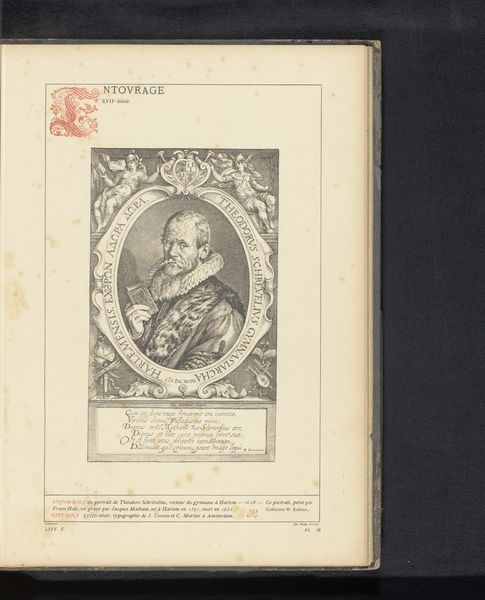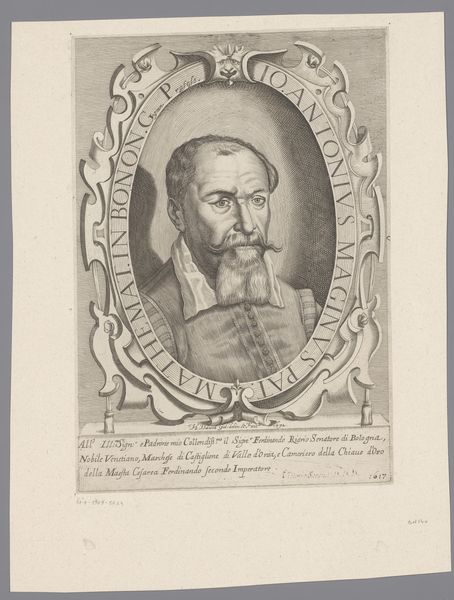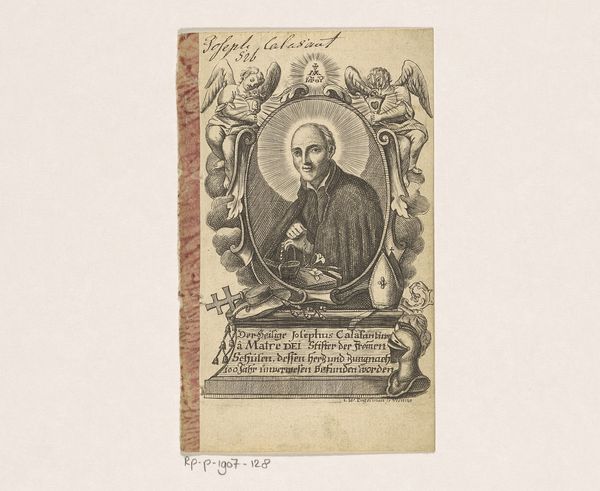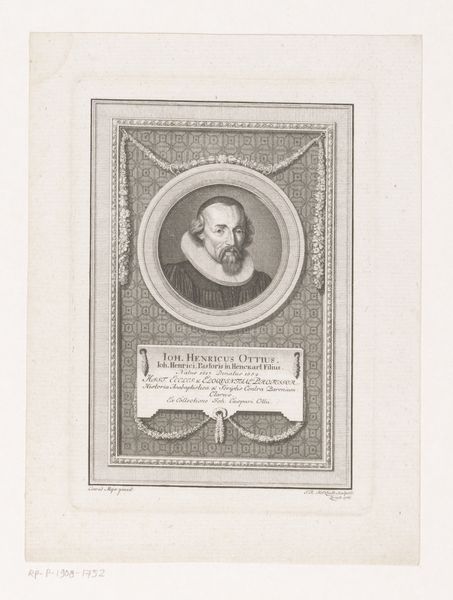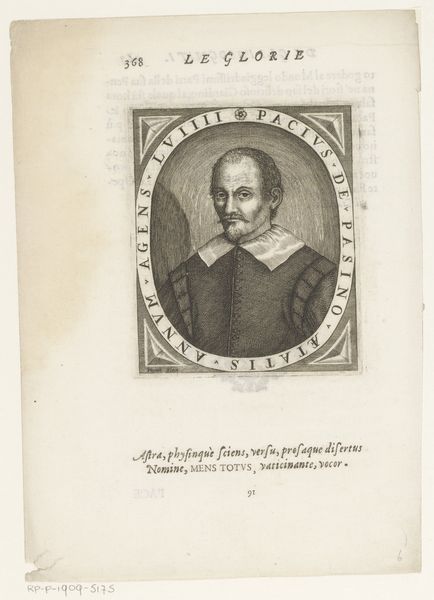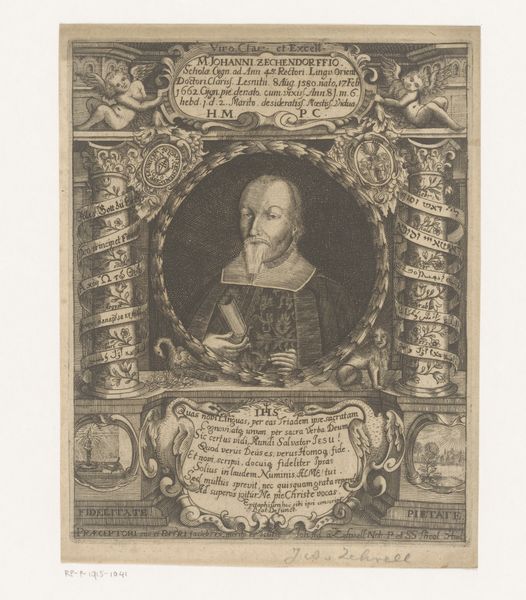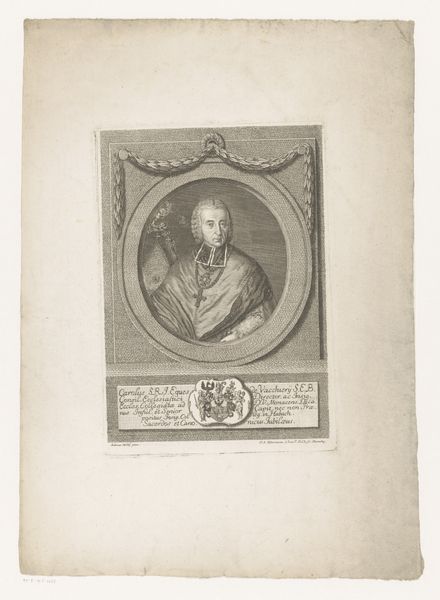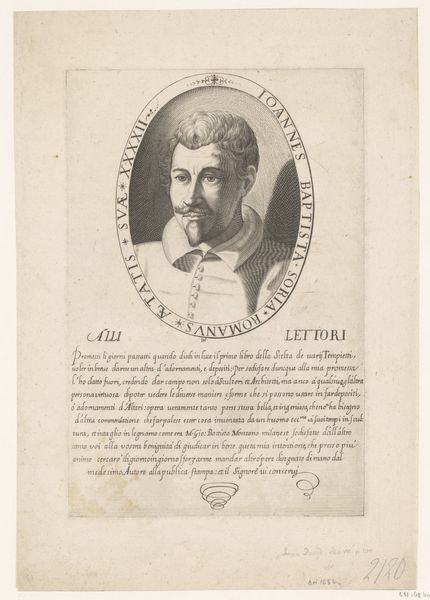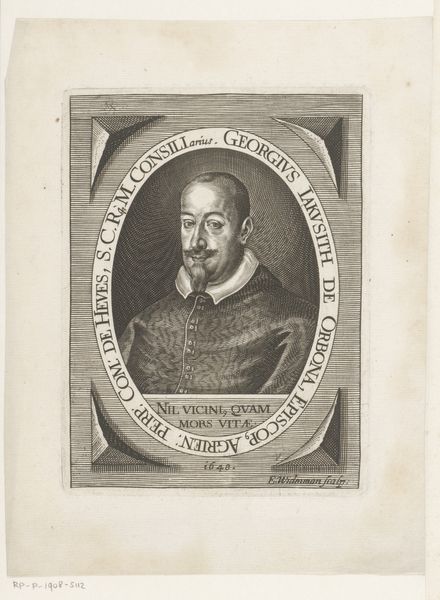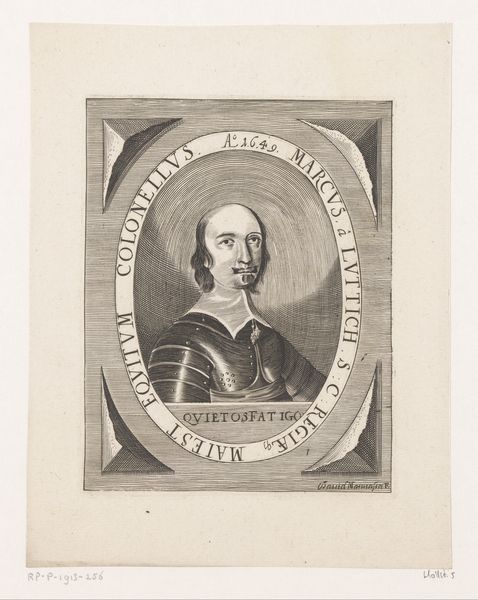
Portret van Cornelius Jansenius en portret van Jean Duvergier de Hauranne 1642 - 1704
0:00
0:00
drawing, print, engraving
#
portrait
#
drawing
#
baroque
# print
#
engraving
Dimensions: height 92 mm, width 62 mm, width 86 mm, height 59 mm
Copyright: Rijks Museum: Open Domain
Curator: This engraving, “Portret van Cornelius Jansenius en portret van Jean Duvergier de Hauranne,” created between 1642 and 1704 by Guillaume Vallet, presents a diptych of sorts, wouldn’t you agree? Editor: Yes, I think so. The portraits feel formal, almost severe, set against those dense inscriptions, and create quite an intriguing, but quite solemn impression overall. What strikes you most about the piece, though? Curator: I see this print as a fascinating artifact reflecting the religious and political tensions of its time. Jansenius and Duvergier were key figures in the Jansenist movement, a Catholic theological movement that challenged the authority of the Church and emphasized individual conscience. How does the juxtaposition of these two figures strike you? Editor: It does invite reflection. It's interesting that the piece would highlight them both on the same page. The inscriptions underneath their portraits might reveal even more, if they were translated. But what does it mean to have both men portrayed side-by-side like this? Curator: Consider it a form of visual activism, a way to solidify their shared commitment to a specific ideology and ensure their legacy was remembered and potentially canonized. The engraving immortalizes their intellectual and spiritual kinship, providing a message about theological belief, perhaps resistance against established power structures within the church. Does understanding this context change how you perceive the work? Editor: Absolutely. The engraving now reads as a statement— a unified front, despite their individual identities. Thank you for clarifying those complexities. I hadn’t really considered all the nuances of how their belief system comes through just by looking at them both together! Curator: And understanding the historical context enriches the visual narrative. It pushes us to think about who controlled the means of art production at the time, and who had the most to gain, or lose.
Comments
No comments
Be the first to comment and join the conversation on the ultimate creative platform.
